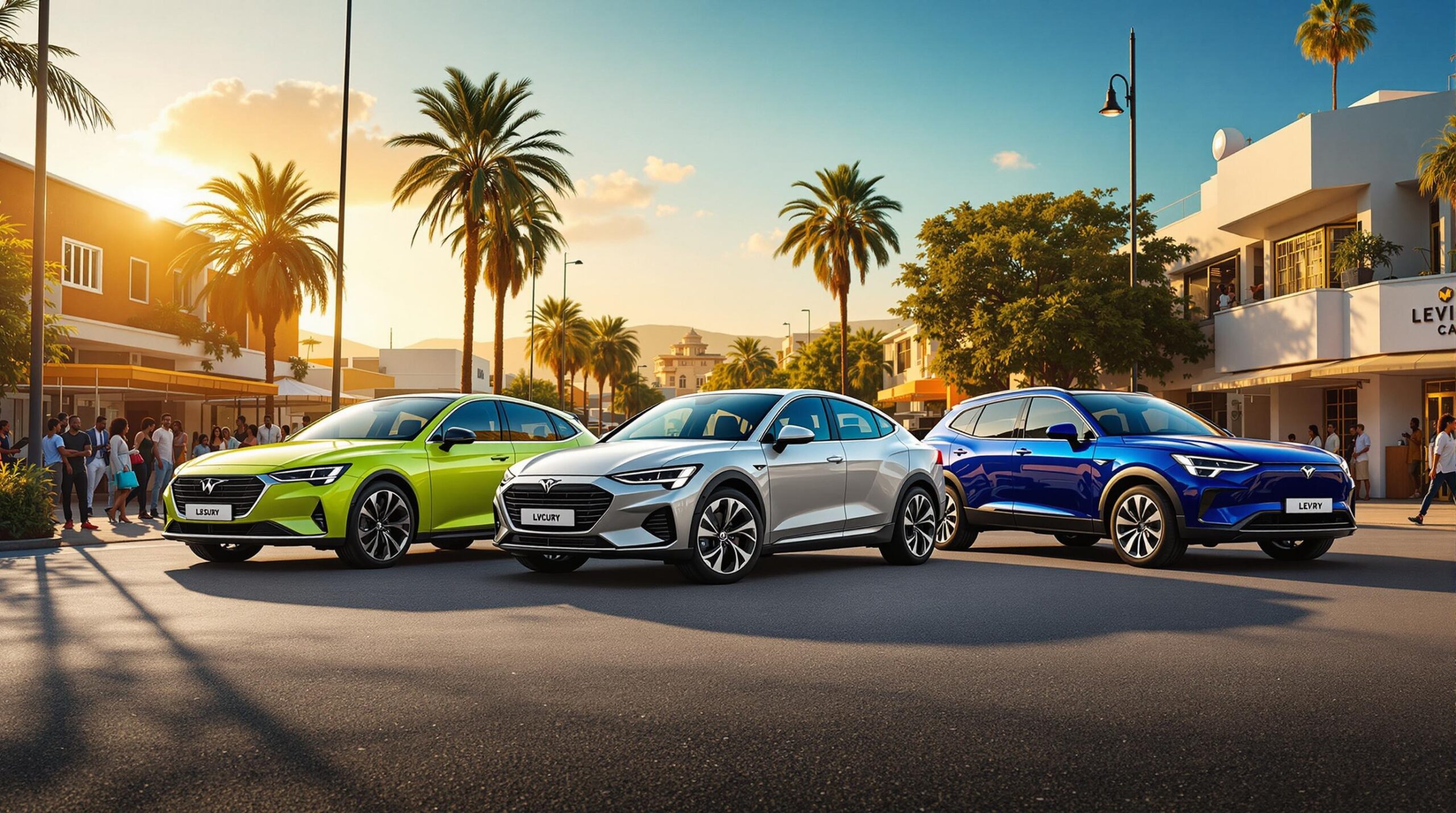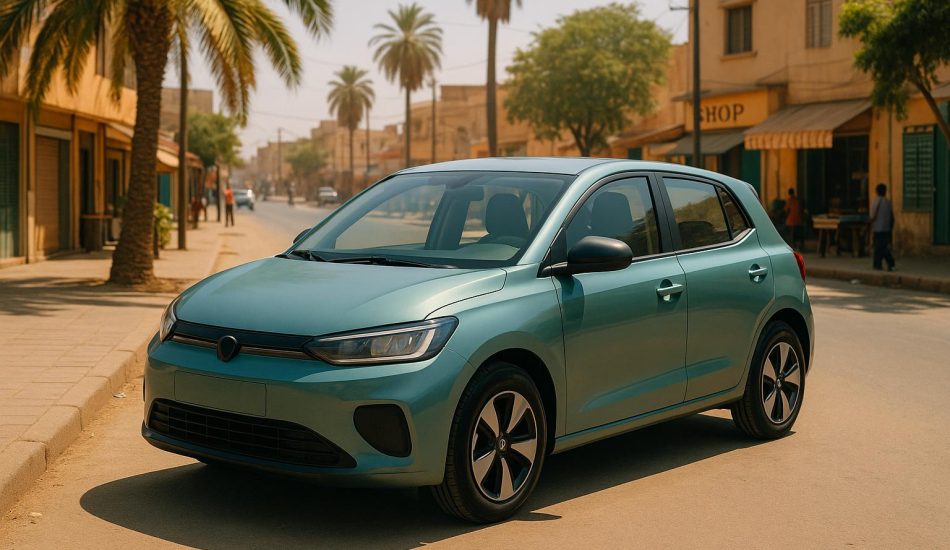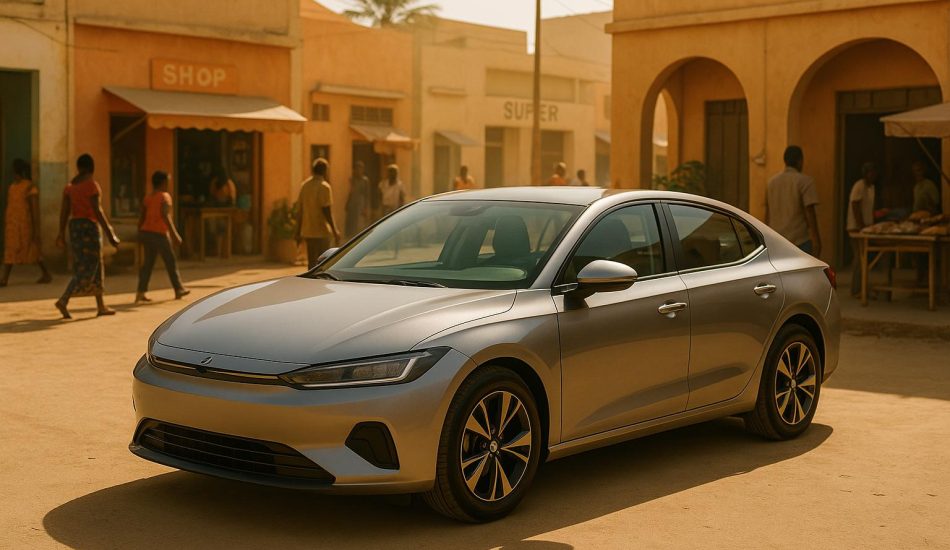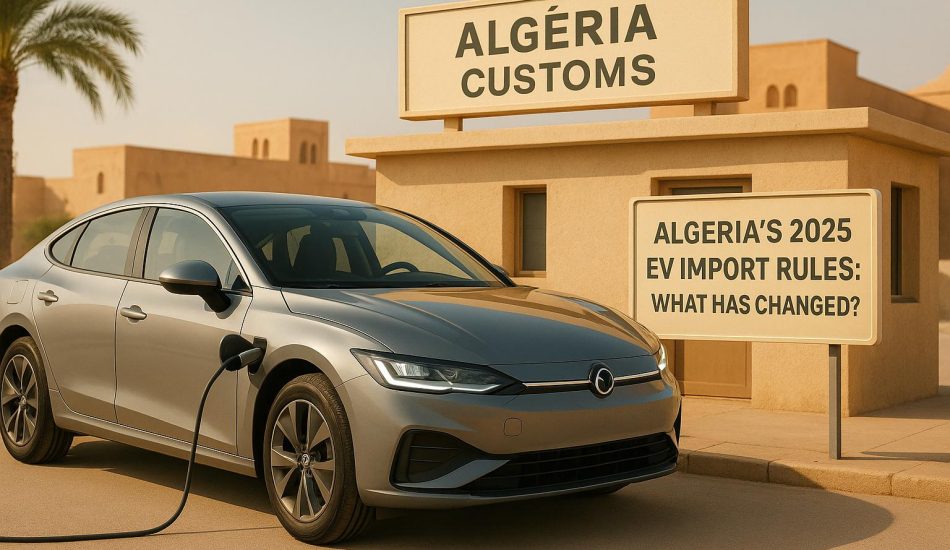
Electric cars in Africa cost between $4,800 and $97,000, depending on the model and features. Here’s a quick breakdown of key details:
- Entry-level EVs: Start at $4,800 (e.g., LINGBOX UNI).
- Mid-range EVs: Range from $23,300 to $47,500 (e.g., BYD Dolphin Active).
- Luxury EVs: Cost $85,000 or more (e.g., ZEEKR 009).
Additional Costs:
- Import duties and taxes: Vary by country, with some offering waivers (e.g., Ghana’s 20% duty waiver).
- Home charging installation: Averages $826 per vehicle in Ghana.
- Maintenance: EVs typically cost 30-50% less to maintain than gas-powered cars.
- Insurance: $1,200–$2,000 annually, higher than for traditional vehicles.
Charging Infrastructure:
- By 2025, Africa is expected to have 903 charging stations. However, only 17% of countries currently have at least 10 public chargers.
Quick Comparison Table:
| Category | Price Range | Popular Models |
|---|---|---|
| Entry-Level | $4,800–$25,000 | LINGBOX UNI, Nissan Leaf |
| Mid-Range | $23,300–$47,500 | BYD Dolphin, Tesla Model 3 |
| Luxury | $85,000+ | ZEEKR 009, Tesla Model S |
Electric vehicle costs in Africa depend on factors like import duties, financing options, and infrastructure availability. While upfront prices are high, lower maintenance and charging costs can make EVs a competitive option over time.
Electric Car Base Prices in Africa
EV Prices by Segment
Here’s a breakdown of electric vehicle (EV) prices by segment:
| Category | Price Range | Popular Models |
|---|---|---|
| Entry-Level | Starting around $25,000 | Chevrolet Bolt EV, Nissan Leaf |
| Mid-Range | $40,000–$60,000 | Tesla Model 3, Ford Mustang Mach-E |
| Luxury | Over $70,000 | Tesla Model S, Audi e-tron, Lucid Air |
Price Differences by Region
In Ghana, specific policies have a big impact on EV affordability. For example, a 20% import-duty waiver reduces the time it takes for EVs to reach cost parity by one year. Lowering finance rates from 23% to 10% pushes parity to year seven. If both measures are combined, cost parity can be achieved in just one year.
Across the continent, the situation varies widely. About 28% of African countries have set EV adoption targets, while 17% have at least 10 public charging stations. However, motorization rates remain low, with 76% of countries reporting fewer than 100 vehicles per 1,000 people – far below the global average of 300 per 1,000. These factors heavily influence EV pricing across the region.
Base prices for EVs are shaped by a mix of import duties, financing options, and infrastructure availability – factors we’ll explore further in the next section.
TCS | We test drive South Africa’s cheapest electric car
Main Cost Components
When looking at base prices across segments, it’s essential to understand the specific factors that influence the final purchase price.
Some of the main cost factors beyond the vehicle’s base price include the model chosen, import-related expenses, and any government incentives.
Available Models and Prices
Here’s a breakdown of available models across different price categories:
| Price Category | Models | Base Price |
|---|---|---|
| Entry | LINGBOX UNI | $4,800 |
| GEELY PANDA MINI BASE | $5,880 | |
| Budget | BYD YUAN PRO | $10,880 |
| LEAPMOTOR T03 | $12,000 | |
| BYD QIN PLUS EV | $14,180 | |
| Mid-Range | DONGFENG FENGON WINDSTAR E380 | $23,300 |
| DONGFENG eπ 008 EV | $28,700 | |
| BYD DOLPHIN ACTIVE | $31,854 | |
| Premium | DONGFENG DF6 EV | $38,560 |
| DONGFENG RCH 6 EV | $44,500 | |
| BYD ATTO 3 2025 | $47,500 | |
| Luxury | ZEEKR 009 | $85,000 |
| VOYAH DREAMER EV | $97,000 |
These prices represent the base cost before adding other fees.
Import Costs by Country
Import costs include several components: the base price, shipping fees, import duties, customs clearance, and local registration fees. Some countries offer reduced import duties or other financial incentives, which can help lower the overall cost of electric vehicles.
EV24.africa listings data
sbb-itb-99e19e3
Long-term Ownership Costs
When considering electric vehicles (EVs) in Africa, it’s essential to think beyond the initial purchase and import fees. Long-term operating and maintenance costs play a major role in determining affordability.
EVs are cheaper to maintain, thanks to fewer moving parts and regenerative braking, which can reduce maintenance and operating expenses by 30-50%. Typical maintenance includes tasks like tire rotations, replacing cabin air filters, changing brake fluid, and conducting yearly battery health checks.
Insurance for EVs typically costs between $1,200 and $2,000 annually – about 10-20% higher than insurance for internal combustion engine (ICE) vehicles. Battery replacements, while rare during standard ownership periods, can range from $5,000 to $15,000. Despite these factors, the total cost of owning an EV often rivals or even beats that of ICE vehicles.
Cost Comparison by Country
Looking at import costs across Africa, it’s clear that duties and taxes significantly impact pricing. For example, Ghana applies a 20% import duty, showing how factors like waivers and financing terms can influence cost timelines.
Key factors affecting regional price differences include import duties, VAT, financing interest rates, government incentives, and the availability of charging infrastructure. When considering electric vehicle options in various African countries, buyers should evaluate the base price along with these additional costs to make informed decisions.
Buying Guide for African Markets
Navigating the electric vehicle (EV) market in Africa requires thoughtful planning to make a smart purchase. Based on cost comparisons by country, here’s how to approach your local EV market effectively.
Research Your Country’s EV Readiness
Start by understanding how prepared your country is for EV adoption. Some countries, like Seychelles, Morocco, Mauritius, and South Africa, are ahead of the curve with better-developed EV infrastructure for passenger vehicles.
Look Into Available Incentives
Explore ways to lower your overall costs. Some common incentives include:
- Waived duties or reduced tariffs
- Low-interest green loans (typically under 10% APR)
Assess Key Infrastructure Factors
Before buying, evaluate the following:
- Public charging availability: Only 17% of African countries have at least 10 public charging stations.
- Grid reliability: High reliability is reported in just eight countries.
- Local service support: Ensure there’s a reliable dealer and repair network in your area.
Choose the Right EV Model
Pick an EV that fits your budget and aligns with the local infrastructure. Here’s a quick comparison of models by price category:
| Price Category | Models | Base Price |
|---|---|---|
| Entry | LINGBOX UNI | $4,800 |
| Budget | BYD YUAN PRO | $10,880 |
| Mid-Range | BYD DOLPHIN ACTIVE | $31,854 |
| Premium | BYD ATTO 3 2025 | $47,500 |
| Luxury | ZEEKR 009 | $85,000 |
Calculate the Total Cost
When budgeting, factor in all expenses, including:
- Home charger installation
- Routine maintenance
- Financing interest rates
Don’t forget to subtract savings from incentives or reduced charging costs. Lastly, confirm the availability of local service options to avoid unexpected repair challenges.
Summary of EV Costs in Africa
The total cost of owning an electric vehicle (EV) in Africa depends on several factors, including base prices, import fees, incentives, and operating expenses. EV prices vary widely, ranging from $4,800 to $97,000, depending on the model and the country.
Additional costs include shipping methods (roll-on/roll-off or container), customs clearance, registration, import duties, and local taxes. Regions with more extensive charging networks and better service support generally have lower ongoing operating costs. These upfront expenses, along with the costs of charging infrastructure and maintenance, make up your overall EV investment.
To get a clear picture of your total cost, consider local fees and any available incentives.




